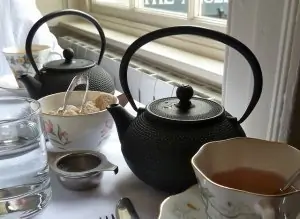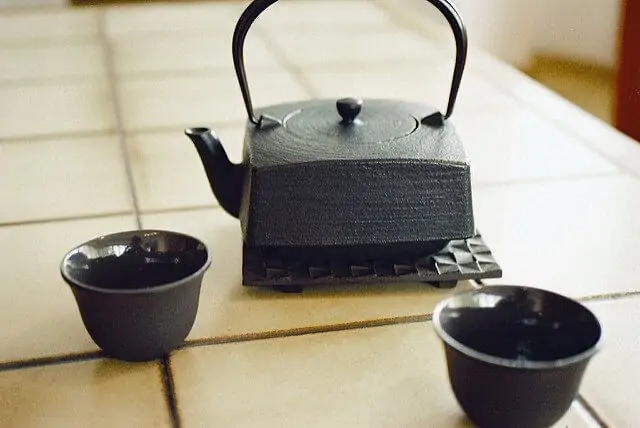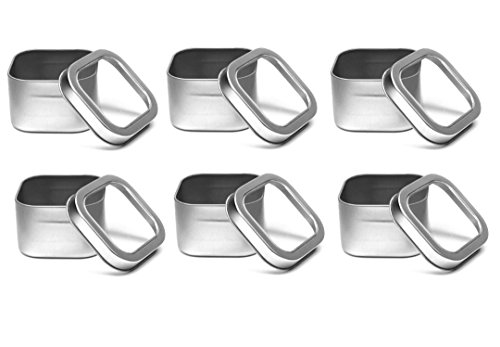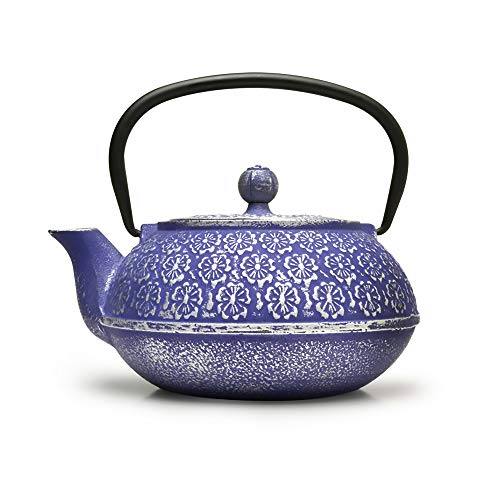
Brewing tea in a cast iron pot is probably the oldest method still in use today. In fact, I don’t think there’s a method older than cast iron outside of ceramic pots. It has been around for hundreds of years, with its birth in Japan during the Sencha period.
These pots have been known for longevity and beauty since their inception, and I don’t see that changing anytime soon. However, when talking about the longevity of cast iron, there are things that will maintain and keep your teapot in tip-top, tea-making shape.
If you want to maximize the life (and beauty) of your cast iron pot, you will have to give it the love and affection it deserves. Take care of the teapot, and this will be a family heirloom for the next several generations. If you neglect it, it could rust terribly and it’s hard to get it to come back from that point.
Cleaning cast iron teapots
If you use your teapot regularly, very little maintenance is required. The very act of boiling water and brewing tea produce a protective barrier against rust. Just remember to never leave water sitting in the pot. Always empty it and let it air dry.
But if you’ve got a teapot that hasn’t been used in a while, or you’ve come across a thrift store find that needs a good cleaning, follow the steps below.
These Nakpunar clear top tins from Amazon are perfect for organizing your loose leaf tea.
Cleaning cast iron teapots is a little more in depth than with cleaning teapots made from other materials. One important thing to remember is don’t use soap, salt or oil to clean your pot. (Salt and oil can be used to remove rust, we will go into further detail on that later.)
Cleaning steps
- Boil water
- Take the lid off and infuser out of the teapot
- Swish boiling water around
- Take cloth and wipe the inside of the teapot to absorb moisture
- Turn upside down on dishtowel
- Clean diffuser
Following these steps will get your teapot back into shape as well as prevent rusting. Now you’re ready to use a teapot that will give you years of reliable tea making.
Let’s talk about these steps in depth.
Drink your tea from these beautiful, no-handle Miya Japanese teacups from Amazon.
Step 1
Boiling water is done is so that you can eliminate any bacteria that may be living inside the teapot. This step is important because bacteria is known to build-up inside of damp, dark places, a cast iron teapot is the perfect place for bacteria to grow.
Step 2
Taking the lid and the diffuser out of the teapot, this is so that you can get a good clean in the teapot itself.
Step 3
Swishing the boiling water around enables water to come into contact with every area of the pot. If you were to leave it at the bottom simply, then only the lower portion of the pot would become disinfected.
Can you ever have too many teapots?
This Primula blue floral cast iron teapot from Amazon is gorgeous.
Step 4
Pour the water out and wait for the pot to cool. Much of the water will evaporate from the heat of the pot. Dry any remaining moisture thoroughly. Switch to a dry towel if necessary to ensure that you get every last bit of moisture.
Step 5
Turning the teapot upside down is important here. If there is any extra water inside the pot, then you will begin to see little rust stains develop inside the pot, putting it upside down ensures that you get every last bit of water outside of the pot.
These Cotton Craft commercial grade dish towels from Amazon will dry your teapot quite nicely.
Step 6
Of course, the cleaning is not complete until you clean the diffuser out. Without this step, you will get build-up in the strainer. If you have gunk stick in the diffuser, you will not get an optimal brew.
I wrote a post on the best cast iron teapots. Check it out…
Following these steps occasionally will help you to keep your teapot in the best shape possible. Remember, you don’t need to do this every time you use your pot. The normal boiling of water and steeping of tea actually work to build up coatings inside the pot that keep it from rusting.

Want to learn even more about cast iron? Check out this post.
But these are the steps for cleaning a dirty or mildly neglected pot. What if you have cast iron pot that is in really bad shape?
If you have an old cast iron teapot that has been left to rust, and you want to restore it, here are the steps that need to be taken.
Restoring Rusted Cast Iron Teapot
The first step you should take when trying to restore your cast iron teapot is to make a solution mix of 50-percent water and 50-percent vinegar. If the rust has been on there for a long time and the vinegar solution is not cutting it, you can use baking soda or Bar Keepers Friend to help loosen the rust and make it easier to remove.
A tea light candle inside this Happy Sales warmer (Amazon)
keeps your teapot warm as you drink your tea.
In some cases, water and vinegar are not enough to get the job done. If this doesn’t work, another good way to chip away at the rust is to use olive oil and finely ground salt. Combine these two everyday products to make an abrasive solution that is robust enough to knock off the rust. Once the rust is gone, follow the steps above.
Got some stubborn rust? See my post on how to restore cast iron.
Wrap – Up
Making tea in a cast iron teapot is, in my opinion, the best way to do it. Cast iron pots take far less maintenance the more you use them. I think that means we should all be making more tea.
Additional Resources
- Seasoned Advice – Why you don’t have to season cast iron teapots
- Steepster Forums – Restoring a Cast Iron Teapot
Image credit via Flickr Creative Commons: John G. and Javier K.









